The NCERT Solutions for Class 8 Maths include topics with engaging math challenges and activities that strengthen math concepts. Each question of the exercise in NCERT Class 8 Maths Solutions has been carefully solved for the students to understand, keeping the examination point of view in mind.
Class 8 Maths Chapter 4 – Practical Geometry Exercise 4.2 Questions and answers help the students to understand the construction of a quadrilateral when two diagonals and three sides are given. These NCERT Solutions are prepared by BYJU’S subject experts using a step-by-step approach.
NCERT Solutions for Class 8 Maths Chapter 4 – Practical Geometry Exercise 4.2
Access Other Exercise Solutions of Class 8 Maths Chapter 4 – Practical Geometry
Exercise 4.1 Solutions 1 Question
Exercise 4.3 Solutions 1 Question
Exercise 4.4 Solutions 1 Question
Exercise 4.5 Solutions 4 Questions
Access Answers to NCERT Class 8 Maths Chapter 4 – Practical Geometry Exercise 4.2 Page Number 62
1. Construct the following quadrilaterals.
(i) Quadrilateral LIFT LI = 4 cm
IF = 3 cm TL = 2.5 cm LF = 4.5 cm
IT = 4 cm
Solution:
A rough sketch of the quadrilateral LIFT can be drawn as follows.
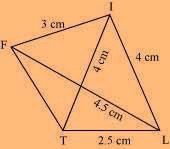
(1) ∆ ITL can be constructed by using the given measurements as follows.
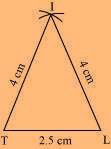
(2) Vertex F is 4.5 cm away from vertex L and 3 cm away from vertex I. ∴, while taking L and I as centres, draw arcs of 4.5 cm radius and 3 cm radius, respectively, which will be intersecting each other at point F.
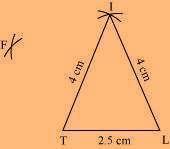
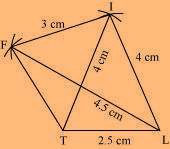
(3) Join F to T and F to I.
LIFT is the required quadrilateral.
(ii) Quadrilateral GOLD OL = 7.5 cm
GL = 6 cm GD = 6 cm LD = 5 cm OD = 10 cm
Solution:
The rough sketch of the quadrilateral GOLD can be drawn as follows.
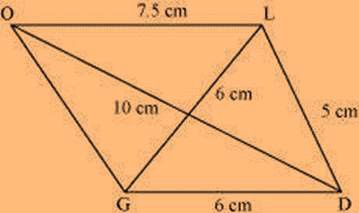
(1) ∆ GDL can be constructed by using the given measurements as follows.
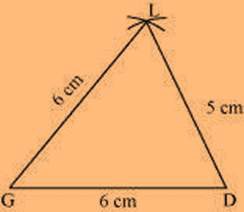
(2) Vertex O is 10 cm away from vertex D and 7.5 cm away from vertex L. Therefore, while taking D and L as centres, draw arcs of 10 cm radius and 7.5 cm radius, respectively. These will intersect each other at point O.
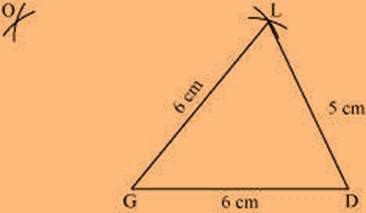
(3) Join O to G and L.
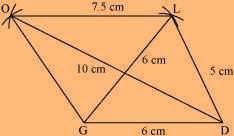
GOLD is the required quadrilateral.
(iii) Rhombus BEND
BN = 5.6 cm
DE = 6.5 cm
Solution:
We know that the diagonals of a rhombus always bisect each other at 90º.
Let us assume that these intersect at point O in this rhombus. Hence, EO = OD = 3.25 cm
The rough sketch of the rhombus BEND can be drawn as follows.
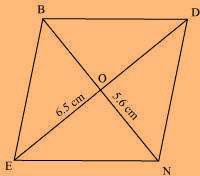
(1) Draw a line segment BN of 5.6 cm and also draw its perpendicular bisector. Let it intersect the line segment BN at point O.
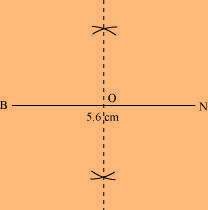
(2) Taking O as the centre, draw arcs of 3.25 cm radius to intersect the perpendicular bisector at points D and E.
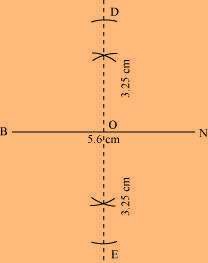
(3) Join points D and E to points B and N.
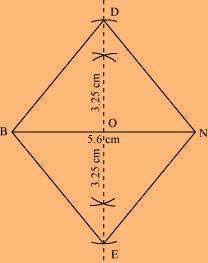
BEND is the required quadrilateral.
Exercise 4.2 of NCERT Solutions for Class 8 Maths Chapter 4- Practical Geometry is based on the following topic:
- Constructing a Quadrilateral
- When two diagonals and three sides are given
Also, explore –





Comments